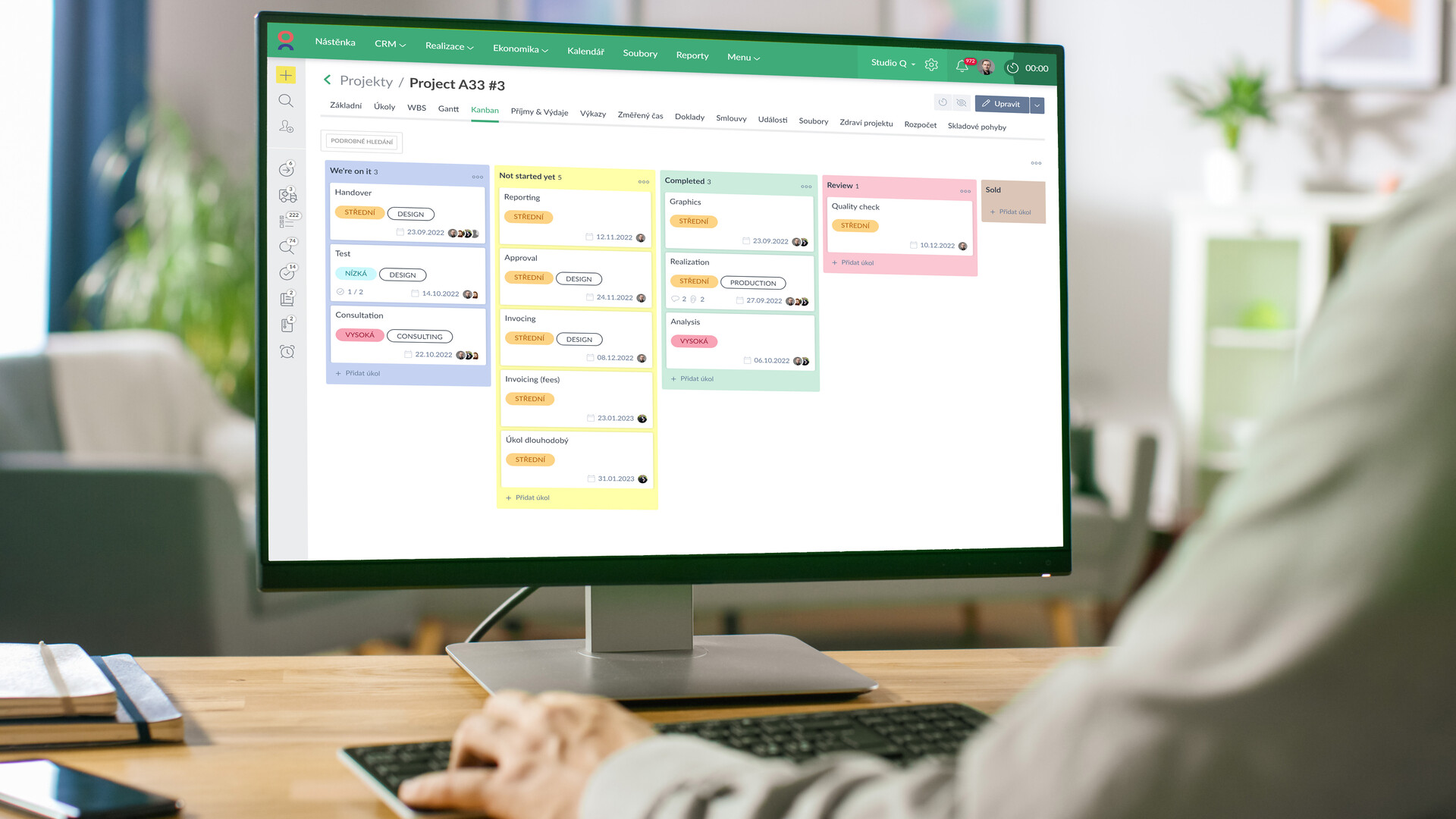Successful project management is essential to managing your business, but if you talk to any project manager, they’ll tell you that planning, juggling responsibilities, and quickly responding to bottlenecks isn’t straightforward. How do you define the project’s scope? Who’s in charge of what? What stages does the project need to go through?
These are just some questions that you’ll need to answer for each project that comes in – and that’s why we have project management methodologies and frameworks. Frameworks and methodologies give you the fundamental building blocks to successfully plan and manage projects throughout their lifecycle.
But there isn’t a single “best” framework to follow, and depending on your organisation’s size, how it operates, and its industry, you might need to consider more than one. And that’s why we’re going to discuss the most popular project management methodologies and how you can choose the right one for your organisation.
🎓 CAFLOU® academy is brought to you by CAFLOU® - 100% digital project and business management software

What are project management methodologies and frameworks?
Although the terms “methodology” and “framework” are often used interchangeably in project management, they differ in how flexible and descriptive they are. Project management methodologies provide specific processes and paths to follow to help you achieve defined goals. In contrast, frameworks are more flexible – they give project managers plenty of room to adapt, test, tweak processes and requirements, etc.
The advantage of implementing a methodology is that you’ll have a greater likelihood of achieving defined results in a repeatable way. This makes methodologies like the waterfall method attractive for industries like manufacturing, where you really can’t afford to make changes or mistakes.
8 Popular project management methodologies
1. Agile
While agile is usually referred to as a methodology, some experts argue that it’s more of a framework – and we’re inclined to agree with them. Because while the Agile Manifesto guides project managers on how to approach projects – and manage them – it doesn’t dictate how to run them. So, project managers have the freedom to innovate and adapt the framework according to each project’s needs.
The twelve principles highlighted in the Agile Manifesto encourage teams to make changes to their projects and processes to improve efficiency and innovation. The principles encourage regularly engaging stakeholders, empowering the implementation team, prioritising customer satisfaction, and embracing requirement changes even at later stages, among other things.
Agile’s flexible nature makes it a popular choice for projects that don’t need precise, repeatable results. The framework encourages creativity and innovation.
2. Scrum
Scrum is a framework for implementing the agile methodology; it’s designed to help team members work closely together to achieve project goals. It employs the concept of “sprints” and decomposes work from the strategic level into actionable tasks that your team can work on every day.
As its name suggests, a sprint is a workflow that spans a short time period — typically one or two weeks. Your team will initially work on a handful of tasks during these weeks, and host regular Scrum meetings. They’ll then reflect on the work from these weeks before deciding how to proceed.
Organisations implementing scrum usually have a dedicated “scrum master,” who distributes workloads and helps team members achieve their goals. Scrum teams may also use a visual scrum board to track their tasks and the progress of each, which you can also do via project management software.
Scrum’s agile, adaptive nature makes it popular in industries like software development, engineering, and financial services. It’s particularly effective for small organisations and teams.
3. Waterfall
Waterfall is one of the most well-known project management methodologies, known for producing predictable, repeatable results. The methodology is known as “waterfall” because of its sequential process, with individual, successive phases. Teams (usually) only move on to the next phase after the previous one is complete.
The waterfall method also requires teams to conduct the majority of the research upfront, so they can accurately estimate resource requirements, timelines, and deliverables. This means that the outcomes of waterfall projects are predictable, but they’re not flexible if changes arise along the way.
Waterfall is a popular choice for projects that have clear requirements and a defined scope that’s unlikely to change. If the cost, design requirements, time, resources, and processes are known, then it’s an ideal methodology to achieve your goals. This is why the methodology is popular in industries like manufacturing, where the parameters are known and there’s little-to-no room for variation in the outputs.
4. Kanban
If you’re familiar with the famous Kanban board — which was rapidly adopted by project management tools following Trello’s success — then you’ll already have an understanding of the Kanban methodology. The method lets teams visualise their workflows with signaling mechanisms. Kanban boards display the work-in-progress at different stages of a project, and the progression of work along each phase.

Kanban was originally used by Toyota, a global automaker with a renowned lean methodology, to manage the different phases of production. Now, businesses of every size use the Kanban method across various industries. You’ll find major D2C brands like Nike using Kanban, and relatively small marketing and IT services agencies using it, too.
Working with Kanban boards is ideal for projects with continuous, repeatable workflows. For example, you might use a Kanban board to visualise a content production pipeline, where each card corresponds to a different stage of production, such as research, writing, editing, and publishing.
5. Lean
The Lean methodology was first used extensively in manufacturing, and it’s founded on the principle of reducing waste. At its heart, Lean is customer-centric; it encourages teams and organisations to maximise the value for the end customer while using as few resources as possible. It’s also one of the methodologies that Toyota employed in the 1980s to maximise efficiency.
The types of waste that the Lean methodology aims to eliminate include:
- Extra work. Are there any tasks being done that can be eliminated?
- Time-related. Including process bottlenecks, waiting times, downtime, etc.
- Resources. Human resources that aren’t effectively utilised.
- Excess production.
While Lean may have originated in the manufacturing industry, its focus on optimising service delivery has made it popular in many other industries, too, such as healthcare, education, financial and legal services, and even the hospitality sector.
6. Six Sigma
The Six Sigma methodology shares the Lean method’s goal to eliminate waste, although it defines waste differently. Six Sigma considers waste to be a result of variations in a process, which means organisations using the method aim to minimize variability. Additionally, while Lean is more of a framework that encourages a specific mindset for project management, Six Sigma is a full-fledged methodology with defined systems and processes.
Six Sigma provides a hierarchical model for leadership, with professional certifications to prepare people for different responsibilities. The certifications award professionals “belts” – such as black or white – that testify to their readiness for specific responsibilities.
While Six Sigma has applications in various industries, it requires a fair deal of resources to execute – so it’s not ideal for smaller businesses. The methodology is most popular in the manufacturing industry.
7. PRINCE2
PRINCE stands for “Projets in Controlled Environment,” and the methodology emphasises control and organisation. The linear framework encourages teams to move initiative along predefined stages, and it was originally based on the UK government’s PROMPT (Project resource organization management planning technique) framework. PRINCE is currently one of the most popular project management methodologies in the world, known for its simplicity and reliability.
While even experienced project managers benefit from employing PRINCE2, one of the methodology’s biggest draws is that it’s beginner friendly. It has straightforward, defined principles and processes that guide teams through core project management essentials, including planning, communication, time management, and resource allocation.
PRINCE2 is a flexible methodology, and you can apply its principles to any other framework or methodology. It’s also easy to manage this framework with a work management system like Caflou. PRINCE2 also has a framework called PRINCE2 Agile for managing agile projects.
8. PMBOK by PMI
Project Management Body of Knowledge, or PMBOK, is a framework developed by the prestigious Project Management Institute (PMI). Unlike the other frameworks and methodologies we’ve discussed, PMBOK is internationally recognised as the standard for project management fundamentals. It details the best practices, tools, guidelines, and processes for project management.
Project managers use the fundamentals from PMBOK in conjunction with other methodologies, like Waterfall or Scrum. It’s worth studying PMBOK because it’ll help you better manage projects, even if you’re already using another framework. Additionally, PMBOK is a powerful tool for standardising project management across your organisation – by uniting teams with the best practices and guidelines.
Choosing the right project management methodology
Depending on the size of your organisation, you might need to rely on one or more frameworks to manage projects. According to PMI, one mistake that project managers in large organisations make is trying to forcefully fit projects to a given methodology, even when it’s not the best choice.
PMI has also developed a project categorisation framework that you can use to determine the best-fit methodology for a given project, which is helpful for big companies. The framework factors in considerations like the industry your business operates in, project and product lifecycles, project characteristics, the relationship between different phases, and more.
And while small businesses, with around 1-100 employees, might not need more than one project management methodology, PMI’s framework can help you choose the right one for your organisation. If you’re new to project management, PMBOK and PRINCE2 are great places to start, because they’ll give you a foundational appreciation of project management essentials. You can then adapt these principles to the methodology you adopt, like agile or waterfall.
Are you equipped with the right software?
Almost 47% of surveyed project managers don’t have access to real-time project KPIs because they lack the right tools and systems. Many businesses rely on spreadsheets or a patchwork of tools with subpar integrations to manage their projects, which can harm productivity and collaboration. Project management tools can drastically improve the way your organisation manages and collaborates on projects.
For example, Caflou offers
Comprehensive project and task management
Manage multiple projects and tasks on a single, centralised platform. Generate reports automatically and view progress in real-time.
Resource management
All of your people, in one place. Assign responsibilities, track productivity, and collaborate with your team on a fully centralised business management solution.
Workflow automation
Automate laborious, manual tasks to improve efficiency. Let your team focus on adding value by freeing them from mundane work.
Focus on financial aspects of project management
Manage project financial targets, budgets and project cash flow or even invoicing alongside managing the work to be done.
Ready to transform the way your organisation manages projects? Get started with Caflou for free today.
<< Back to all articles in the series Caflou Project Management Academy